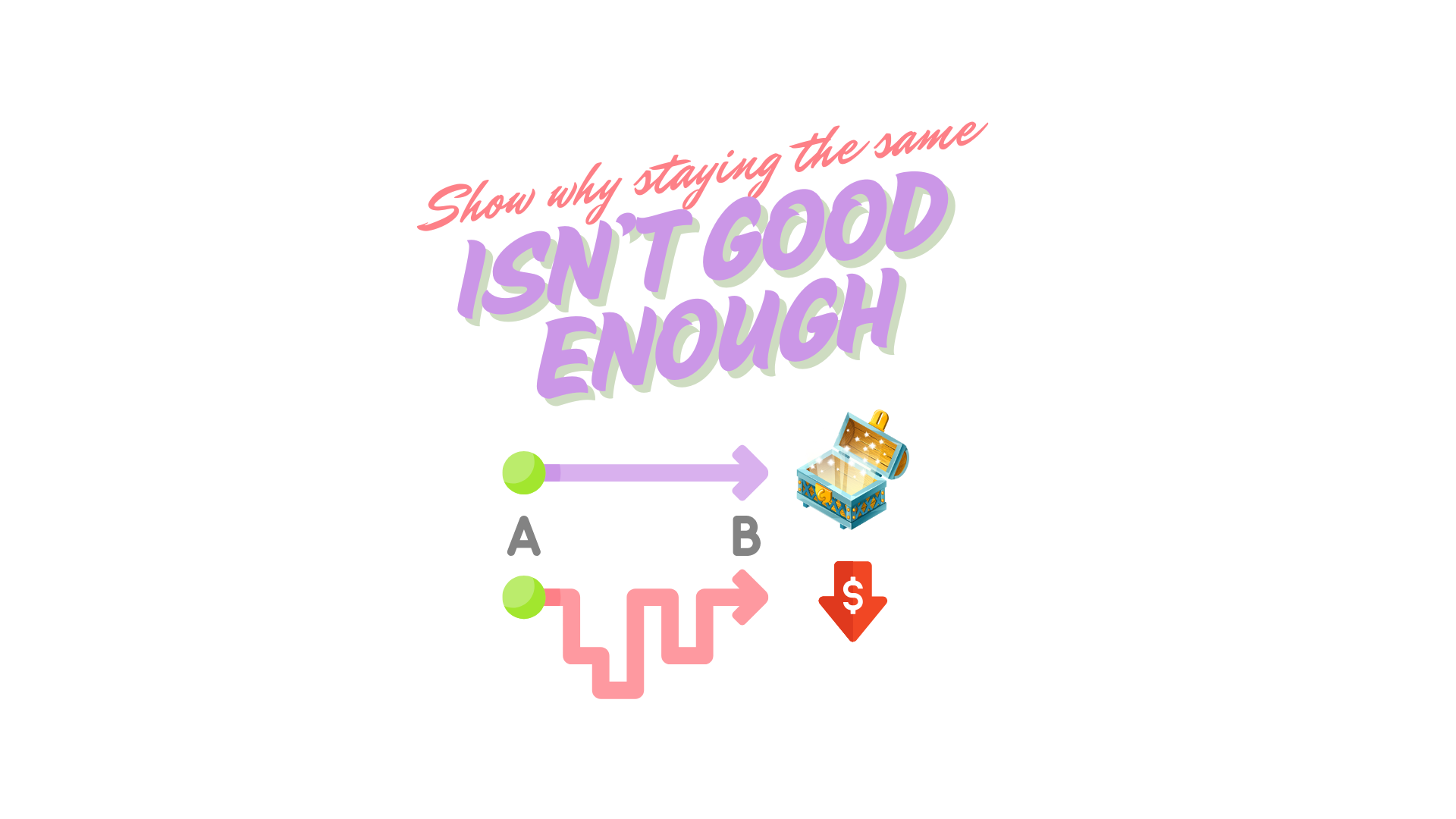Improving customer experience (CX) isn’t something you can tackle alone - it’s a team effort. To make real changes in your company, you’ll need allies who share your vision. These “partners in crime” could be colleagues, leaders, or team members who understand the value of CX and are willing to work with you to make it happen.
This guide is designed to help you build your case for CX improvement, win over key stakeholders, and inspire your team to join the journey. With the right tools, clear steps, and a collaborative mindset, you can turn your vision for better CX into a reality.
STEP 1: Avoid resistance – let people choose, don’t push
Stakeholders often resist ideas that feel imposed on them. To avoid triggering resistance:
1. Start with Empathy: Instead of presenting your CX project as a mandate, approach stakeholders with curiosity. Ask open-ended questions like:
• “How do you think our customers perceive our service today?”
• “What would you like to see improved in how we interact with customers?”
2. Share the Vision, Not the Solution: Present the broader goal of enhancing customer satisfaction and engagement. Let stakeholders contribute their perspectives on how to achieve this.
3. Frame the Idea as an Opportunity: Position CX development as a way to solve existing problems rather than introducing a new, burdensome initiative.
• Example: “We’ve heard customer complaints about long response times. Investing in CX could help us address that while reducing churn.”

STEP 2: Show why staying the same isn’t good enough - highlight the price of being inactive.
People often prefer sticking to what they know, even if it’s not the best option. To change their minds, explain the problems with staying the same and show what they could miss out on by not improving. To counter this:
1. Quantify the current state: Use data to highlight where the company is falling short.
• Example: “Our Net Promoter Score (NPS) is 20% lower than the industry average, and we’re losing repeat business as a result.”
2. Show the risks of staying the same: Emphasize the long-term consequences of not improving CX.
• Example: “By 2025, 80% of customers are expected to prioritize CX over price. If we don’t invest now, we could fall behind competitors.”
3. Share success stories: Provide examples of companies in your industry that have seen measurable improvements through CX development.
• Example: “Company X increased customer retention by 30% after implementing a similar initiative.”

STEP 3: Start where they are – connect to what they already believe
Big changes can feel overwhelming, so it’s important to meet people where they are. Build on ideas or goals they already agree with, and show how your plan fits with them.
1. Start small: Propose a pilot program rather than a full-scale transformation.
• Example: “Let’s begin by improving the customer onboarding experience. It’s a manageable starting point with high visibility and impact.”
2. Align with their priorities: Connect CX development to the goals stakeholders already care about, such as revenue growth, efficiency, or brand reputation.
• Example: “By reducing churn by 10%, we could add $500,000 in annual recurring revenue.”
3. Use familiar language: Avoid technical jargon or buzzwords that might alienate stakeholders. Speak in terms they understand and value.
STEP 4: Make it feel safe – show there’s little to lose
Stakeholders may hesitate because they fear wasting time, money, or resources. Reduce their concerns by:
1. Proposing low-risk experiments: Offer a limited trial or phased rollout.
• Example: “We can start by implementing a chatbot on our website to handle common inquiries. This will let us test the impact without major investments.”
2. Provide clear ROI projections: Break down the costs and potential benefits.
• Example: “For every $1 we invest in CX, companies typically see a $3 return in increased sales and retention.”
3. Offer contingency plans: Address “what if” scenarios to show you’ve planned for uncertainties.
• Example: “If the pilot doesn’t meet expectations, we can pivot to focus on other areas with minimal loss.”

STEP 5: Use evidence – build credibility through proof
People are more likely to trust ideas backed by multiple sources. Build your case with:
1. Customer feedback: Share survey results, complaints, or testimonials that highlight the need for CX improvement.
• Example: “42% of our customers mentioned long wait times as their biggest frustration.”
2. Industry benchmarks: Cite industry data or trends showing the importance of CX.
• Example: “Companies that prioritize CX are 60% more profitable than those that don’t, according to Forrester Research.”
3. Expert endorsements: Leverage opinions from trusted voices within and outside the organization.
• Example: “Other companies in our industry have seen tangible results from focusing on CX, such as reducing customer complaints by 25% and improving retention rates significantly. We can achieve similar outcomes by starting with focused initiatives.”
4. Social proof: Show how competitors or industry leaders are prioritizing CX.
• Example: “Three of our closest competitors recently revamped their CX processes and saw immediate gains in market share.”

STEP 6: Align business goals & KPIs with the CX project
To ensure your CX initiative gains strategic support, explicitly connect it to your organization’s broader business goals and key performance indicators (KPIs). This step demonstrates the tangible value of CX improvements.
• Define relevant KPIs:
Identify and track metrics such as Net Promoter Score (NPS), customer retention rates, average response time, and revenue growth. Illustrate how improvements in these areas can directly contribute to the company’s bottom line.
• Tie CX to strategic objectives:
Map out how enhancing the customer experience aligns with goals like increasing market share, reducing churn, or improving operational efficiency. For example, show that a 10% improvement in customer satisfaction could lead to measurable increases in repeat business and referrals.
• Use data-driven insights:
Present historical data or industry benchmarks to validate your claims. Visual aids like graphs and dashboards can help stakeholders see the correlation between customer experience initiatives and business performance.
• Create a business case:
Develop a clear narrative that links CX improvements with expected ROI. Use case studies or pilot project results to forecast potential gains. For example, “By improving our CX, we project a 15% boost in customer retention, contributing to a $1M increase in annual revenue.”
Putting it all together
Here’s how you might structure your pitch to stakeholders:
1. Introduction: Start with questions to engage them and uncover their pain points.
• “What challenges do you think our customers face when interacting with us?”
2. State the case: Use data and stories to highlight the current gaps in CX and their impact.
• “We’ve received feedback that our support wait times are driving customers away. Addressing this could significantly boost satisfaction and retention.”
3. Propose a solution: Introduce your CX project as a low-risk, high-reward opportunity.
• “I propose starting with a pilot program focused on customer onboarding. This will allow us to make immediate improvements while building momentum for a larger initiative.”
4. Support with evidence: Provide proof points from customers, industry data, and success stories.
• “Industry leaders who improved onboarding saw a 20% increase in customer lifetime value.”
5. Close with collaboration: Invite their input to refine the idea and make them feel like co-creators.
• “How do you see this fitting into our current strategy? Are there areas you’d like us to prioritize?”
Final tip: stay open and flexible
Stakeholders are more likely to buy in if they feel heard and involved. Use their feedback to iterate on your proposal and make them champions of the project. By systematically addressing resistance with the REDUCE framework, you’ll increase your chances of successfully selling the CX development initiative.
We'll help you to get started. Map your customer journey for free in under 5 minutes with Viral CX. Click here to start!